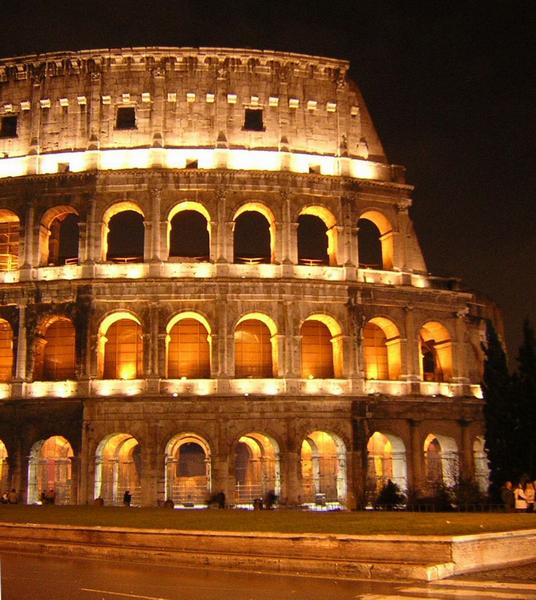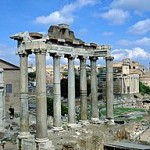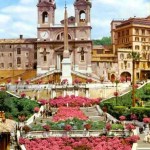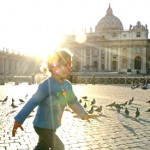The ancient and colossal history of Rome, with its intoxicating cultural concoction makes it one of the most beautiful places to visit in the world. It has history and legend engraved in every single wall, street and alley, and the wasted remains of structures are as impressive and awe-inspiring today, as they were in their heydays. Here are five places that a traveler should visit while he/she is in Rome.

The Colosseum
Originally known as the Amphitheatrum Flavium, the Colosseum was built between 72 B.C to 80 B.C, under the rules of Kings Vespasian and Titus respectively. It is a monumental structure that stands at the heart of Rome. Other than a fighting arena, it has served various other purposes, such as a place for workshops and housing, as a quarry, fortress, quarters for religious orders, and even as a Christian shrine, given that many Christians were killed by animals during the arena fights. The outer walls have fallen apart, and the floor has also given way to the underlying hypogeum where all animals and gladiators were stationed before fights. There are always long queues awaiting entry, and the timings differ according to the availability of daylight.

Forum Romanum
This is a rectangular plaza or forum, surrounded on all sides by the ruins of other important ancient governmental buildings. For centuries, it was the center of Roman public life: a place for elections and triumphal processions, criminal trials, public speeches, gladiator matches. Located in the narrow and small valley between Capitoline Hills and Palatine, the modern day Forum Romanum only captures fragments of the magnificent ancient public square that attracts millions of sight-seers. Visitors and enthusiasts can visit this place during daylight hours. The Imperial Fora, however, is opened only for special events, and not for regular public visits.
Trevi Fountain

This is a fountain in the Trevi district of Italy. It is 26.3 meters in height and 49.15 meters in width. It is built in the Baroque style, and is one of the most famous fountains in the world. Legend has it that visitors who throw coins into the fountain are ensured a return to Rome.

The Spanish Steps
These are nothing but a set of steps on the steep slope between Plazza di Spagna situated at its base, and Plazza Trinita del Monti, dominated by Trinita dei Monti church on top. It is the widest set of staircase in all of Europe. It was built from the French diplomat, Étienne Gueffier’s funds between 1723-1725 and has a total of 138 steps. Beautifully decorated and maintained, it is a major tourist attraction where people do nothing else than sit and relax.
The Vatican City

The Vatican City is an independent, sovereign, landlocked city state whose territory is marked by a walled enclave within Rome itself. It has a population of around 800 inhabitants and a total area of 44 hectares. It is an ecclesiastical state that is ruled by the Bishop of Rome, that is, the Pope himself. Highest state functionaries are all Catholic clergymen. There are many impressive sights to see in this walled enclave too. The greatest attraction is the frescoes of the Sistine Chapel painted by Michelangelo. It is a part of the Vatican Museum, and is only a short walk from St. Peter’s Square. An elevator ride up the National Monument of Victor Emmanuel II offers a breathtaking and panoramic view of Rome. The Apostolic Palace, or the house of the Pope is also worth seeing. St. Peters Basilica, the late Renaissance church located in the Vatican, and designed by the likes of Michelangelo, Bramante, Bernini, Carlo Moderno is also another place to visit. It is considered to be the holiest church in Christianity, as it is the burial site of Saint Peter. The dome of the Church dominates the skyline of the city.
Tourists can opt for bus rides, or simply take a map and walk through the city streets and soak in its ancient history.
![]()





